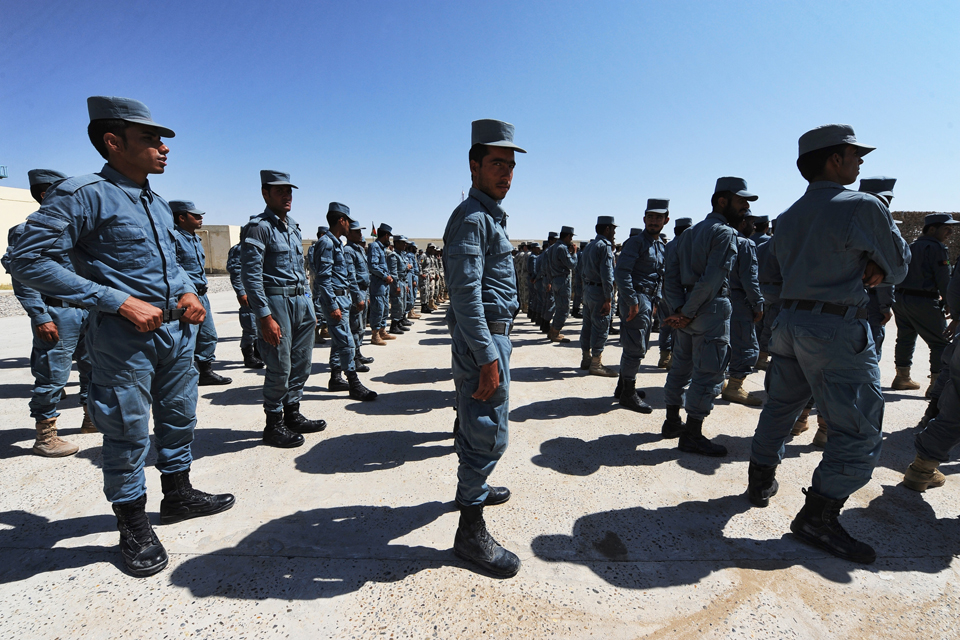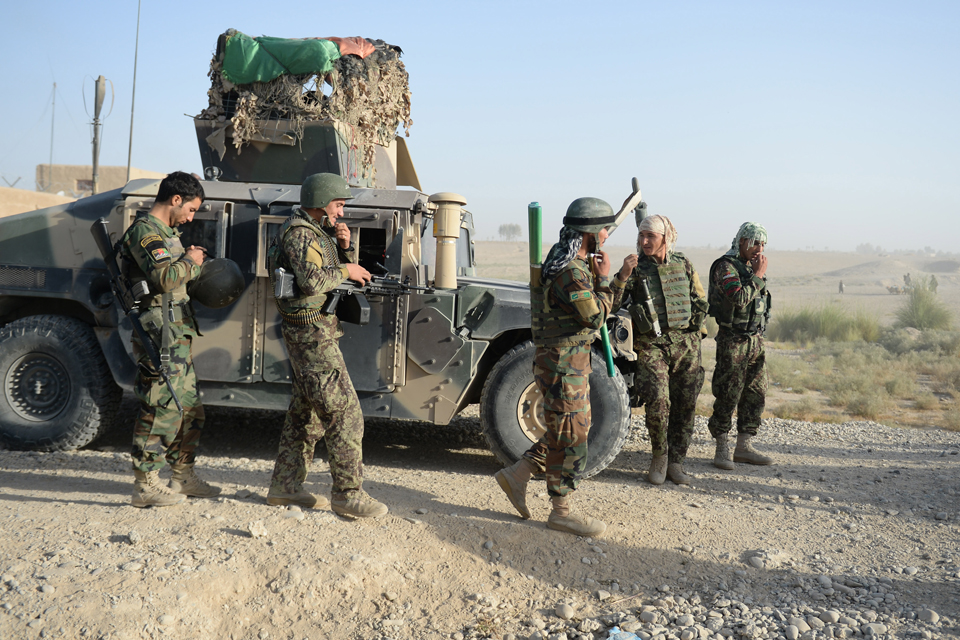An Afghan-led future
Senior British military officers described the progress made in southern Afghanistan this summer at a media briefing in London yesterday.
![Soldiers of the Afghan National Army carry out an operation in Nahr-e Saraj, Helmand province (library image) [Picture: Sergeant Barry Pope, Crown copyright]](https://assets.publishing.service.gov.uk/media/5a6123cbed915d7dfea6c9b2/s300_AMOC-CCT-2013-208-228__1_.jpg)
Soldiers of the Afghan National Army carry out an operation in Nahr-e Saraj, Helmand province (library image)
When 1st Mechanized Brigade deployed to Afghanistan in April this year, Task Force Helmand Commander and the Brigade’s commanding officer, Brigadier Rupert Jones, said that the main objective over the 6-month summer tour was to bolster the confidence of the Afghan National Security Forces (ANSF) by enabling them to take the lead for the first time during the traditional summer fighting season.
Developing that self-belief was a crucial objective, for, once established, the view was that the ANSF would then be hungry to take on full responsibility for security in their country. The local population would then witness that professional pride and have confidence that their own agencies of law and order would prevail against the insurgent. This would open the door still wider for the Afghan government to deliver to its people the bright future that they had come to expect, and in some areas, demand. And this indeed has proven to be the case.
Speaking at yesterday’s briefing, Brigadier Jones was delighted to report that the ANSF had not only risen to, but surpassed that challenge:
The ANSF have flourished due to their independence,” he said. “Our stepping back has, without doubt, brought them on.

A patrol base is handed over to the control of the Afghan National Security Forces in Helmand province (library image) [Picture: Corporal Jamie Peters, Crown copyright]
Throughout the summer the insurgents had undoubtedly recognised the importance of this fighting season and done all they could to discredit the ANSF in the eyes of the Afghans. They were also keen to take false credit for driving ISAF troops out of the country:
It was a concerted effort, but one which didn’t really succeed,” said Brigadier Jones. “It started aggressively but lost momentum because of the performance of the ANSF, who held the initiative throughout.
Describing the Afghan’s 3rd Brigade 215 Corp’s professionalism, Brigadier Jones said:
They are a highly effective brigade, and this was demonstrated when they went to reinforce their sister brigade in Sangin. They put on what I can only describe as a master class. As a fighting force that can plan, integrate their resources, bring in reserves and do all the things that you would expect of a professional army, they were highly impressive.
The impact of this success has been reflected in recent polls as 80% of Afghans declare that they have some, to high levels of confidence in their security forces. And with the quickening pace of International Security Assistance Force (ISAF) bases closing or being handed over to the ANSF, it is clear, the Brigadier said, that the insurgents had failed to achieve their goals.

Afghan Uniform Police recruits on parade (library image) [Picture: Corporal Si Longworth, Crown copyright]
A similar success story can be told about the Afghan National Police:
They have improved enormously over the years,” said Brigadier Jones. “It is the police who deliver security to the protected community day in day out. And because of all this, the Afghan forces are just not asking for our support as much.
In central Helmand, in the last 240 deliberate police operations, ISAF helped them on just 4 occasions. In terms of supporting the army, 3215 Brigade just don’t need us day to day.
We never assist their low level operations any more, and through the course of this summer, in their Brigade and Battalion level operations, ISAF represented just nine per cent of operations on the ground. Last summer it was 41%.
A credible force
Speaking on a shaky video link from Lashkar Gah, General John Lorimer, Deputy Commander ISAF, said:
The ANSF have prevented the insurgents from controlling populated areas or key terrain. Across the country, the vast majority of violence has taken place away from the populated areas. In the top 10 areas which had experienced 35% of the violence, those areas had contained only three per cent of the population. The ANSF emerge from this fighting season confident in themselves, and credible in the eyes of the Afghan people,” said General Lorimer.
A recent survey revealed that the overall favourability rate of the ANSF is some 88% with the Army rated at 92%.
While both the General and the Brigadier recognised that the insurgents could still stage an occasional spectacular, these were proving increasingly difficult to carry out. Not only that, but the impact of such acts of terrorism on the mind-set of a civilian population who were experiencing the benefits that an elected government was having on their quality of life, was dwindling:
Looking forward we think the insurgent will continue to conduct campaigns of fear and intimidation especially against government officials, and on those involved in the elections,” said General Lorimer. “But most of the population have a negative view of the insurgent and don’t want them to return to power.
In a recent poll only some 12% of the Afghan population said that the insurgent had more influence than the government. The fact that the ANSF are in the lead has undermined the insurgent’s message.

Soldiers of the Afghan National Army carry out an operation in Nahr-e Saraj, Helmand province (library image) [Picture: Sergeant Barry Pope, Crown copyright]
Now that the ANSF are up to strength, and demonstrating their prowess day in and day out, ISAF efforts are increasingly being targeted at helping to develop the institutional architecture that will sustain their capability:
Things like manpower planning, budgeting, all those things that happen within a ministry of defence that will build and sustain capability,” said General Lorimer.
Our focus over the winter will be to support the Afghans in preparing for the elections next year and to continue to develop systems at ministerial level. The NATO force will re-posture itself for the post-2014, resolute support mission.
Out of the comfort zone
Closing off the briefing Brigadier Jones was keen to pay tribute to the men and women under his command:
It would do them a huge disservice to suggest that because we are handing off to the ANSF that they are just sitting back. They still face a significant threat that manifested itself only last week with the latest fatality. It is still a very challenging environment. We are asking them to do something that they haven’t had to do before, handing over control.
I had a little mantra that I used throughout the tour, if you are feeling uncomfortable, then you are probably making progress. But our soldiers are very well trained and equipped and they understand the environment in which they are operating. The British public is very proud of their courage and their sacrifice, but I would say that they should also be proud of their achievements.